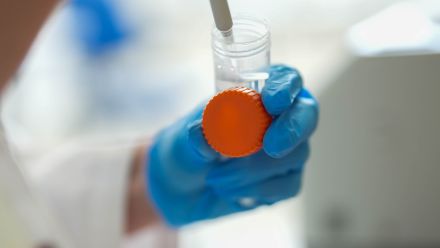First Nations left behind in cervical cancer elimination
Australia is on track to become one of the first countries to eliminate cervical cancer as a public health problem, but Aboriginal and Torres Strait Islander women will miss out unless we act urgently.
Lead researchers, Associate Professor Lisa Whop (ANU) and Dr Megan Smith, Cancer Council NSW, and colleagues are calling for inequities to be addressed and highlight the successful drivers that could be used to do this.
HPV (human papillomavirus) is a common sexually transmitted infection and is responsible for almost all cases of cervical cancer and 90 per cent of anal cancers and genital warts.
To reach elimination, the World Health Organization (WHO) has released a strategy with three targets to be met by every country by 2030.
The strategy calls for 90 per cent of girls to be vaccinated against HPV, 70 per cent of women to be screened at least twice in their lifetime with an HPV test, and 90 per cent of women to have access to treatment.
Cervical cancer incidence must be reduced by around 70 per cent in Indigenous women in Australia but experts say we are a long way from reaching that target.
"Elimination is not on track for Indigenous women across the globe," ANU Associate Professor Lisa Whop, who is a Torres Strait Islander, said.
"Australia, Canada, New Zealand and the US must urgently address their systemic failure to care and provide health for Indigenous women.
"To get to the WHO elimination targets we need primary prevention through vaccines, secondary prevention through screening, and adequate treatment.
"Cervical cancer can be eliminated if we vaccinate, screen and treat but we are just not adequately doing those three things for Indigenous populations."
The researchers are calling for Indigenous Australians to have the same access and quality of care to help bridge the gap with the rest of the population.
"There are enormous equity issues in Australia. This study focused on that inequality in Australia and other high-income countries," Dr Megan Smith said.
"Aboriginal and Torres Islander women experience cervical cancer at the same rates as developing regions of the world, despite having access to the vaccination programs and screening programs."
Cervical screening, previously known as a Pap smear, was traditionally conducted by a GP. The screening can now be done via self-collection through the Government's National Cervical Screening Program.
"We know how to screen for HPV and we have the tools. Now it is about working out what is the best implementation, that will work for all peoples in Australia," Dr Megan Smith said.
"Only about a third of Aboriginal and Torres Islander women are participating in cervical screening and we've got a long way to go to hit WHO targets.
"Self-collection could help address several barriers for Aboriginal and Torres Strait Islander populations.
"It's quick, simple, and accurate. There is a strong element of empowerment and control via self-collection."
The report found several facilitators that can overcome barriers to screening, which include openly talking about screening, trusting relationships with health professionals, and overcoming logistical barriers and privacy concerns.
"It is likely WHO targets will be met for Australia but not for Indigenous women," Associate Professor Whop said.
"To achieve equitable health outcomes for Indigenous peoples, strategies need to centre on Indigenous leadership, knowledge, and solutions with ongoing community engagement.
"We need a culture shift of not accepting status quo of inequity. We need to urgently remove these inequities and eliminate cervical cancer in Indigenous women."
The research is published in Preventive Medicine.
For Journalists
- MEDIA TEAM CONTACTRachel Curtis02 6125 7979


